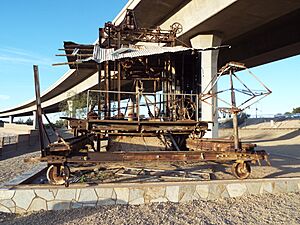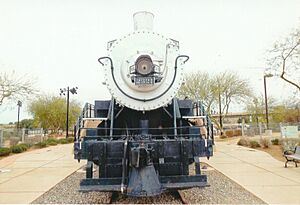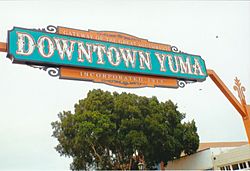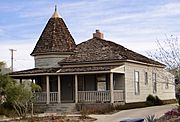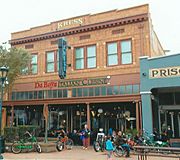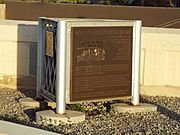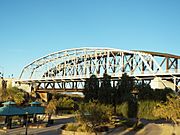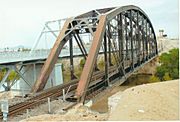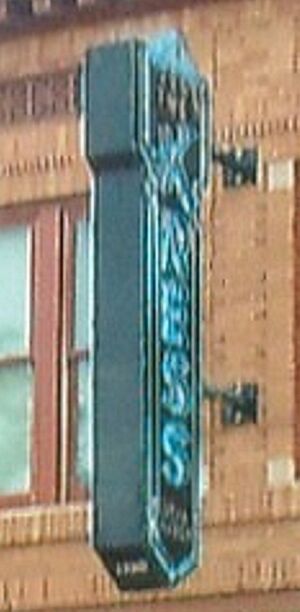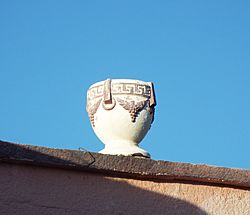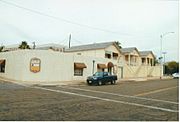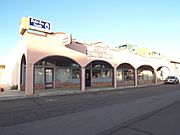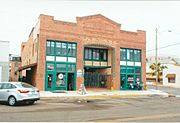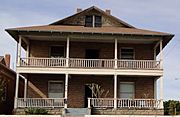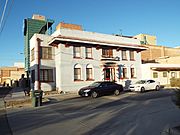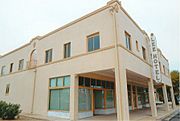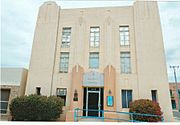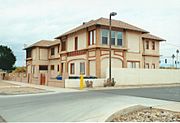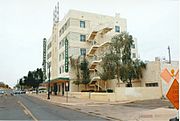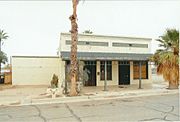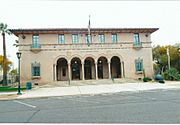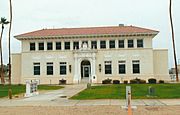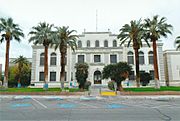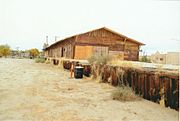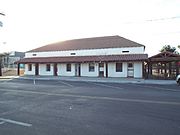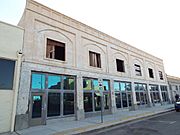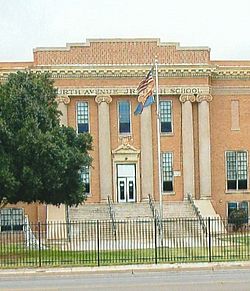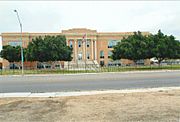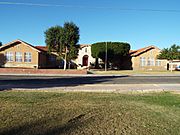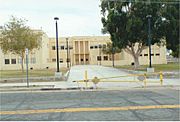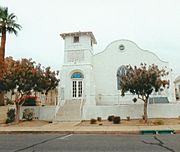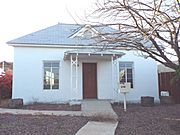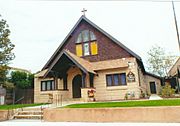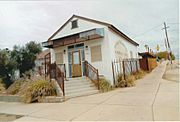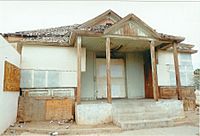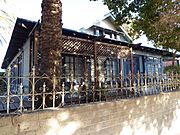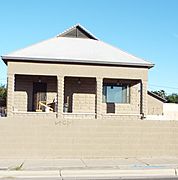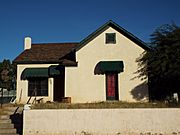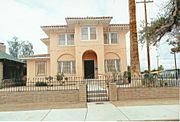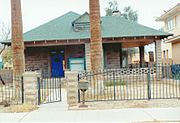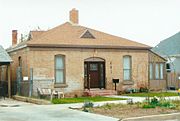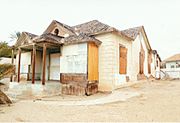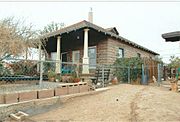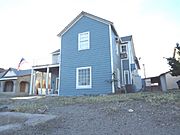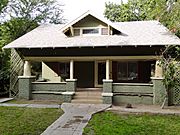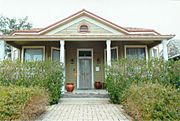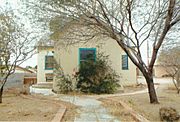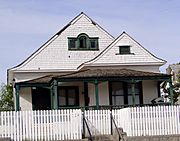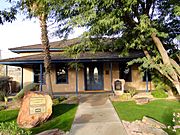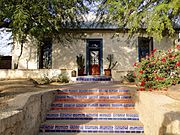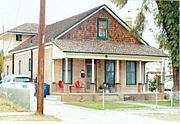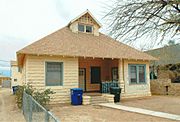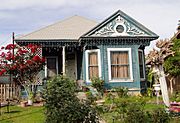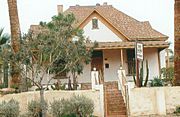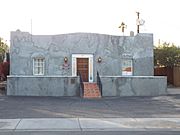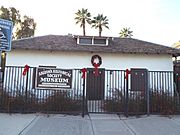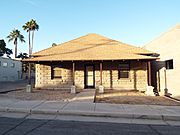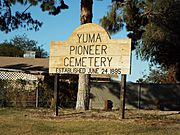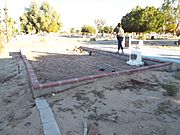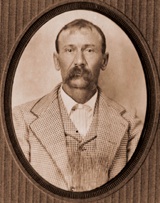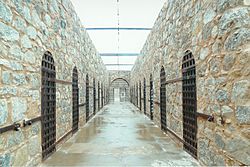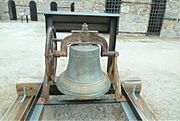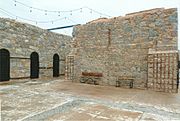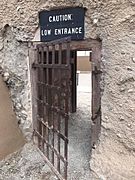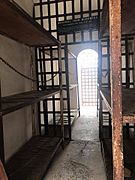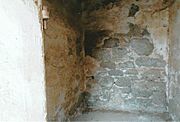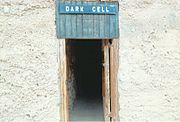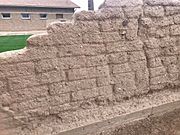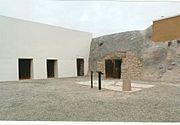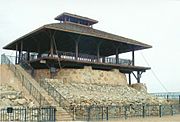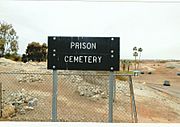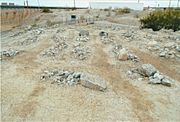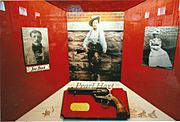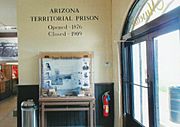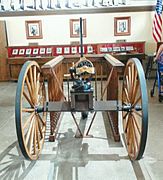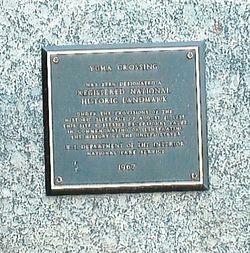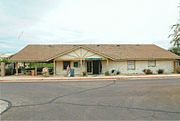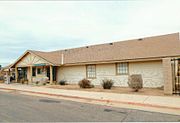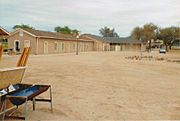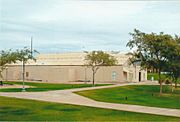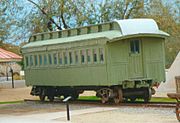List of historic properties in Yuma, Arizona facts for kids
Quick facts for kids
List of historic properties
in Yuma, Arizona |
|
|---|---|
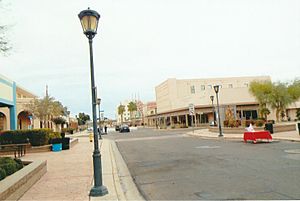
Historic Downtown Main Street
|
|
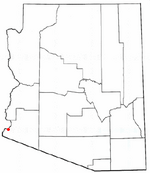
Location of Yuma in Yuma County, Arizona.
|
Yuma, Arizona, is a city with a rich past, full of interesting old buildings and places. This article will take you on a tour of some of these historic spots, including photos of the amazing structures and monuments that still stand today. Yuma is the main city in Yuma County, located in the southwestern part of Arizona. It's home to a special place called a National Historic Landmark, which means it's super important to the history of the United States. You'll see pictures of places like the Yuma Downtown Historic District, the Yuma Quartermaster Depot (now a state park), and the famous Yuma Territorial Prison.
Contents
Yuma's Early Days
Long ago, the area where Yuma is now was home to the Yuma tribe, also known as the Quechan people. In 1540, Spanish explorers Hernando de Alarcón and Melchior Diaz visited the area. They thought the narrow place where the Colorado River could be crossed would be perfect for a city.
At first, the Yuma people and the Spanish got along. However, their relationship became difficult, and the Yuma people had to follow Spanish rules.
In 1853, Yuma became part of the United States Territory (the New Mexico Territory) after something called the Gadsden Purchase. The United States built Fort Yuma, and many new settlers and farmers came to the area. The Yuma Crossing, where people could cross the river, was very important during the California Gold Rush and for many years after. It was known for its ferry boats that helped people cross the river on the Southern Emigrant Trail.
The Yuma tribe bravely fought against the new settlers in the Yuma War (1850–1853). They were eventually moved to special areas called Indian Reservations, like one in western Yuma County, which is now part of Arizona.
In 1853, a small town called Arizona City started across from Fort Yuma. The town grew, and the government set up the Yuma Quartermaster Depot. From 1864, this depot, which is now a state historic park, sent supplies to all the forts in what is now Arizona, and even to parts of Colorado and New Mexico. When Arizona became its own territory, Yuma became the main city for Yuma County in 1871. Arizona City was renamed Yuma in 1873.
Saving Yuma's History
The Yuma County Historical Society works hard to protect important old buildings in Yuma. They team up with the Arizona Historical Society to restore places like the E. F. Sanguinetti House, built in 1867. This house is now a museum for the Arizona Historical Society. They also plan to restore the historic Molina Block, which was Yuma's very first business building.
The city also has a team that helps protect Yuma's historic buildings and their unique designs. They work to keep the city's history alive and visible.
Historic Places to Explore
Historic Neighborhoods
Three areas in Yuma are recognized as historic by the National Register of Historic Places:
- The Brinley Avenue Historic District includes streets like W. 2nd St. and Madison Ave. It was added to the National Register in 1994. The old Yuma Theater, built in 1911, is in this district.
- The Yuma Century Heights Conservancy Residential Historic District is a neighborhood roughly bordered by 4th Ave. and 8th St. It was listed in 1988.
- The Yuma Main Street Historic District covers parts of S. Main St. and W. 3rd St. It was added to the National Register in 1982. The historic Kress Building, built in 1926, is located here.
Famous Bridges
- The Ocean-to-Ocean Bridge was built in 1914. It was the first highway bridge to cross the Colorado River. Its name comes from the fact that it was a key part of one of the first roads that went all the way across the country. It was listed in the National Register of Historic Places in 1979.
- Also pictured is the Southern Pacific Railroad Bridge, which was built in 1923.
Historic Buildings
Here are some of Yuma's historic buildings:
- Cactus Press-Plaza Paint Building was built in 1925. It is located at 30–54 E. 3rd St.
- The Dressing Apartments were built between 1915 and 1917. They are located at 146 1st. Ave.
- Gandolfo Theater was built in 1917 and is at 200 1st Ave.
- Fredley Apartments are located at 406 2nd Ave.
- Power Apartments were built in 1900 and are at 20 W. 3rd St.
- Hotel del Ming (Sol) was built in 1926 and is located at 300 Gila Street.
- Lee Hotel was built in 1917 and is at 390 Main Street.
- Masonic Temple was built in 1931 and is located at 153 2nd Ave.
- Pauley Apartments were built in 1926 and are at 490 West. 1st Street.
- San Carlos Hotel was built in 1930 and is located at 106 1st. Street.
- Stoffela Store was built in 1899 and is at 447 Main Street.
- U.S. Post Office/Yuma Main was built in 1922 and is located at 370 Main Street.
- Yuma City Hall was built in 1921 and is at 181 1st. Street.
- Yuma County Court House was built in 1928 and is located at 168 2nd Ave.
- Southern Pacific Freight Depot was built in 1891 and is at 430 Main Street.
- Southern Pacific Railroad Depot is located on Gila St.
- Molina Block was built in 1870 at 272 Madison Ave. It was one of Yuma's first business buildings.
- Drake Hotel was built in 1922 and is located at 29–30 W. 2nd St.
Historic Schools
These schools are considered important historical places:
- The Fourth Avenue Jr. High School was built in 1920 at 450 4th Ave.
- The Mohawk Valley School is located at 5151 South Ave. 39 East.
- The Roosevelt School is at 550 W. 5th St.
- The Mary Elizabeth Post Elementary School was built in 1940 at 400 5th Ave. It was named after Mary Elizabeth Post, a teacher who helped start Yuma's first women's club in 1903. She also worked hard to create the Carnegie Library in Yuma.
Historic Churches
These places of worship are listed as historic:
- The Methodist Church was built in 1905 and is at 256 1st. Ave.
- The Methodist Parsonage (the minister's house) was built in 1893 and is at 248 1st. Ave.
- St. Paul's Episcopal Church was built in 1909 and is located at 637 2nd Ave.
- Golden Marriage Bell Wedding Chapel is at 106 S. Madison Street. It was originally a "Popular Drug Store" built in 1891.
- Houses of Religious Worship
Historic Homes
Here are some of the historic houses in Yuma:
- The Caruthers House is located at 441 2nd Ave.
- The Double Roof House is located at 553 4th Ave.
- The Frank Ewing House was built in 1920 at 406 2nd Ave. Frank Ewing was a businessman and served as Yuma's Mayor twice.
- The Ruth Ewing House was built in 1906 at 712 2nd Ave.
- The Alfred Griffin House was built in 1905 at 641 1st. Ave. Alfred Griffin took care of the Yuma Grammar school.
- The Peter Hodge House was built in 1905 at 209 Orange Ave.
- The E. B. Jackson House was built in 1906 at 572 1st. Ave.
- The George Marable House was built in 1906 at 482 Orange Ave.
- The Carmelita Mayhew House was built in 1909 at 660 1st. Ave. Carmelita was the wife of Felix Mayhew, who discovered a mine called the North Star Mine.
- The Pancrazi House was built in 1905 at 432 Madison. Ange T. Pancrazi came from France and became a businessman, postmaster, and city treasurer.
- The Clara Smith Riley House was built in 1909 at 734 2nd Ave.
- The Brown House was built in 1893 at 268 1st. Ave.
- The Polhamus House was built in 1869 at 224-226 Madison. It was bought by steamboat pilot Captain Isaac Polhamus in 1884. It was even used as a hospital during a sickness in 1891 and became Yuma's first public library in 1915.
- The Sanguinetti House was built in 1870 at 240 Madison Ave for businessman E.F. Sanguinetti. It is now the Sanguinetti House Museum and Gardens.
- The Ghiotte House was built in 1915 at 90 W. 2nd Street for John Ghiotti, who owned several grocery stores.
- Houses
Yuma Pioneer Cemetery
The Yuma Pioneer Cemetery opened on June 24, 1895. It is located at 1415 1st, Avenue. A famous person named Jack Swilling, who helped start the city of Phoenix, is buried here in the Hodges family plot.
- Yuma Pioneer Cemetery
Yuma Territorial Prison
The Yuma Territorial Prison was a prison built by prisoners themselves in 1875. It opened when Arizona was still a U.S. territory. Life in the prison was tough. Some prisoners slept on steel bunkbeds. The prison also had a "Dark Room" where prisoners were sent alone as punishment. Over 33 years, more than 3,000 prisoners were held there, including 29 women.
Some well-known people who were imprisoned here include:
- Jack Swilling – known as the "Father of Phoenix", who died in the prison in 1878.
- Burt Alvord – a lawman and train robber.
- Bill Downing – a famous outlaw and train robber.
- William J. Flake – a Mormon pioneer who was imprisoned for breaking a law about marriage.
- Pearl Hart – a stagecoach robber.
- "Buckskin Frank" Leslie – a gunfighter.
- Ricardo Flores Magón – a Mexican revolutionary.
- Pete Spence – an outlaw involved in a famous conflict called the Earp-Clanton feud.
Today, the prison is part of the Yuma Crossing and Associated Sites on the National Register of Historic Places. It is now a historical museum run by Arizona State Parks as Yuma Territorial Prison State Historic Park.
Yuma Quartermaster Depot
The Yuma Crossing is an important place in Arizona and California. It was key for travel and sending messages across the Colorado River during Spanish times and when America was expanding. The Yuma Quartermaster Depot was an Army supply base that operated from 1865 to 1883 during Arizona's Indian Wars. Supplies gathered at the depot, located by the Colorado River, were sent all over the Southwest using river boats and mule teams. Up to 900 mules were kept at the depot!
Here are some important parts of the Yuma Crossing and the Yuma Quartermaster Depot State Historic Park:
- The Yuma Crossing Marker is on the banks of the Colorado River. It was listed in the National Register of Historic Places in 1966.
- The Yuma Quartermaster Depot was built in 1864. It was also listed in the National Register of Historic Places in 1966 as part of the Yuma Crossing.
- The Southern Pacific Railroad Passenger Coach Car – S.P. X7 was built in 1875. It was added to the National Register in 2000.
- Southern Pacific Railroad Locomotive X2521 was built in 1907.
See also


